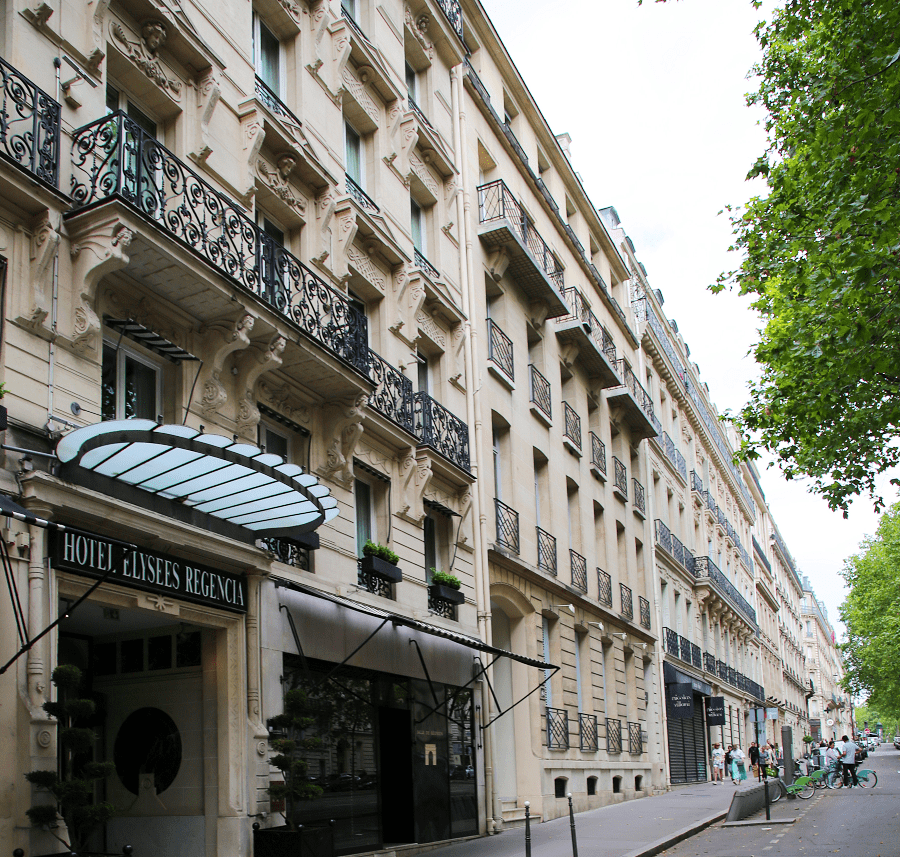The Avenue Marceau is an avenue in Paris (France), marking the boundary between its 8th and 16th arrondissements.
Named after General François Séverin Marceau (1769–1796), it runs from Avenue du Président-Wilson (almost parallel with the Place de l’Alma) to Place Charles de Gaulle (Arc de Triomphe de l’Étoile). It was originally decreed on 13 August 1854 and only ran between the Rue Circulaire and then-Place de l’Étoile before being extended as far as Avenue de l’Empereur by decree of 6 March 1858.
It was named Avenue Joséphine after Joséphine de Beauharnais by the 1858 decree before being given its present name by another decree of 16 August 1879, which also renamed Rue de Wattignies the existing Rue Marceau in the 12th arrondissement.
Main sights
No 5, at the intersection with rue Léonce-Reynaud: Pierre Bergé – Yves Saint Laurent foundation, former Yves Saint Laurent fashion house, transformed into a Yves Saint Laurent museum opened in October 2017.
No. 11: building purchased in 1937 by the Basque country government in exile after the nationalists’ victory in the Spanish Civil War. Believing that this building was acquired with public money, Franco demanded its restitution, especially since publications hostile to him were disseminated there. He won his case in 1951 and the building then housed the cultural services of the embassy of Spain. Today it is the Octavio Paz library of the Cervantes Institute, whose building is located in the same district, 7 rue Quentin-Bauchart.
No. 6: Le Baron nightclub from 2004 to 2018.
No. 12: Permanent assembly of chambers of trades and crafts.
No 22: headquarters of the Spanish embassy in France.
No. 24: hotel built in 1882. Hotel of the Marquis de Panisse-Passis (in 1910).
No. 30: building built in 1914 by the architect André Granet.
No. 31: Saint-Pierre-de-Chaillot church.
No. 32: Clothilde de La Rochelambert, Countess of La Bédoyère then Princess of Moskowa, lady-in-waiting to Empress Eugénie, died there in 1884. The historian Albert Vandal, of the French Academy, died there in 1910.
No. 34: Madame Sacerdote, the famous fashion designer Jenny (second woman in France to have been decorated with the Legion of Honor for her services rendered to the couture) and her husband Joseph, lived here until 1940.
No. 36: hotel of M. L. Lefébure (in 1910), neo-Louis XIII style, with a contemporary elevation.
No. 42: Madame Duprada’s hotel. Home to the Federation of Color Paint and Varnish Industries (FIPEC) and the National Decoration Federation (FND).
No. 54: hotel of the Countess of Salverte.
No 57: seat of the Albanian embassy in France.
No. 58: seat of the Swedish legation in the 1900s.
No 61: here died the British metallurgist Sidney Gilchrist Thomas (1850-1885) at the age of 34.
No. 62: Mr. Marcuard’s hotel (in 1910).
No. 64: hotel of the Countess of Breteuil (in 1910), occupied by the InterContinental Marceau hotel.
No. 71: the Russian sculptor Mark Antokolski (1840-1902) lived and worked there since 1880 when he welcomed Anton Chekhov in April 1898.
No. 75: here lived Gaston Monteux, a shoe manufacturer who had his apartment renovated by the architect-decorator Louis Süe and his associate the painter André Mare, in 1919.
No 77: headquarters of the Danish embassy in France.
No. 78: Mr. Houette’s hotel (in 1910). Neo-Gothic style.
No 78 bis: Radisson Blu Champs-Élysées hotel.
No. 81: former home of Pierre-Gabriel Chandon de Briailles, a former co-owner of the Moët & Chandon champagne house.
See more:




















